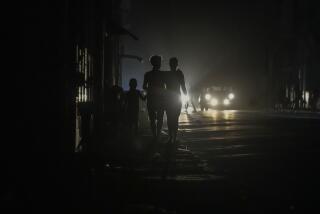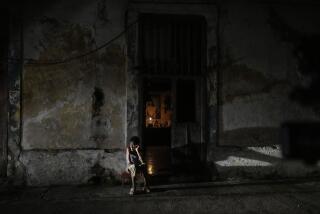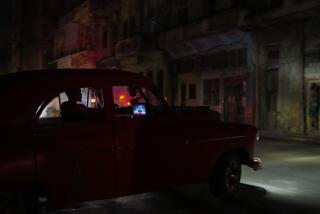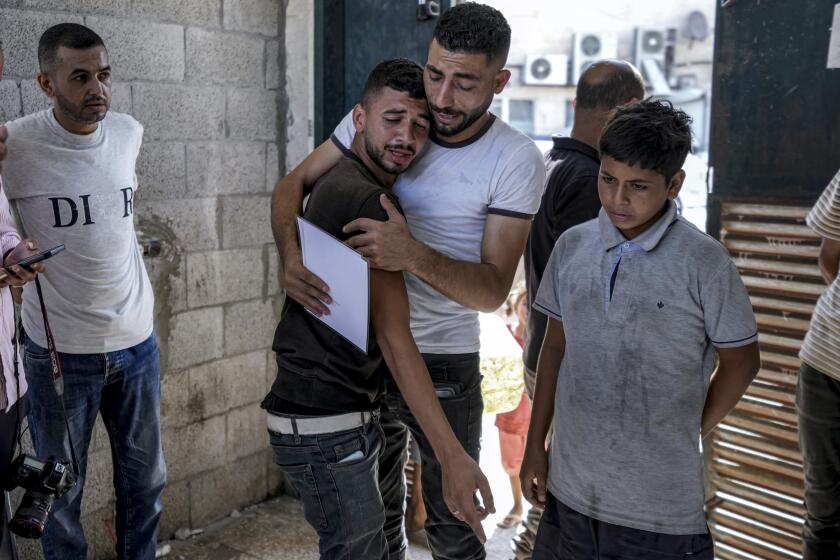Blackouts Mar Papal Stop; Peru Rebels Blamed
LIMA, Peru — A day after he appealed for Maoist guerrillas to lay down their arms, Pope John Paul II’s last stop in Peru was marred Monday night by power blackouts that appeared to be the rebels’ answer.
In central Lima, lights blinked as the papal plane landed around 8:45 p.m. from an arduous day of preaching by the Pope in the northern Peruvian desert.
Around the same time, there were reports of explosions on the outskirts of the capital, but police said they had no reports of any damage or casualties.
At 9:18 p.m., the lights went out for 11 minutes in the residential section of the city, where the Pope had returned from the airport to his lodging at the Vatican Embassy.
There was a strong presumption that the blackouts were caused by guerrilla dynamiting of power pylons feeding down into the capital from the Peruvian Andes.
One Peruvian reporter said he saw the burning symbol of a hammer and sickle on a hillside above the city shortly after the explosions.
Sendero Luminoso, or Shining Path, a Maoist movement centered around the Andean provincial capital of Ayacucho--where the Pope pleaded emotionally Sunday for for an end to guerrilla warfare--has in the past blacked out Lima several times.
The guerrillas have also used the burning hammer and sickle as their calling card, but they have never claimed responsibility for any individual act of sabotage.
With the rebels and the Peruvian armed forces locked in a silent but bloody struggle in the Andes, concern for the Pope’s safety had triggered extraordinary security precautions for the five-day visit, which ends today when the Pope returns to Rome via Trinidad and Tobago, where he plans a brief stopover.
Despite massive turnouts at events here and on a tour of a number of interior cities, there have been no threatening incidents. Peruvian sources believe that the guerrillas risk enormous popular backlash if they endanger the Pope in a fervently Roman Catholic country.
The Pope exhorted guerrillas to “change your path” and lay down their arms as he spoke Sunday to a crowd in Ayacucho, which included the widows and orphans of some of the 4,000 victims of the rebels’ insurgency and of an armed forces counterattack that has drawn international criticism for its apparent widespread violation of human rights.
Earlier Monday, the pontiff flew to the sun-baked inland city of Piura in Peru’s extreme northwest. There, he preached to a crowd of about 100,000 gathered in a sandy field near the airport.
He repeated a theme that has become the focal point of his journey: his commitment to the poor in material goods and to the poor in spirit. And he criticized once more those elements of the so-called theology of liberation that advocate class war and violence.
Later, he went to Trujillo, one of the continent’s oldest Spanish colonial cities, which resembles a town in the Sahara because of its almost exclusively adobe construction.
To a crowd of mostly agricultural workers gathered on a dusty university field, he proclaimed that “the growing breach between the rich and the poor is a scandal and a contradiction of the Christian being.”
“For this reason,” he added, “(the church) wants to be close to those who are unjustly treated and the most poor, not only in the economic field but also in the cultural, spiritual and moral field.”
He called on world leaders and others to do something about the causes of poverty.
More to Read
Sign up for Essential California
The most important California stories and recommendations in your inbox every morning.
You may occasionally receive promotional content from the Los Angeles Times.









